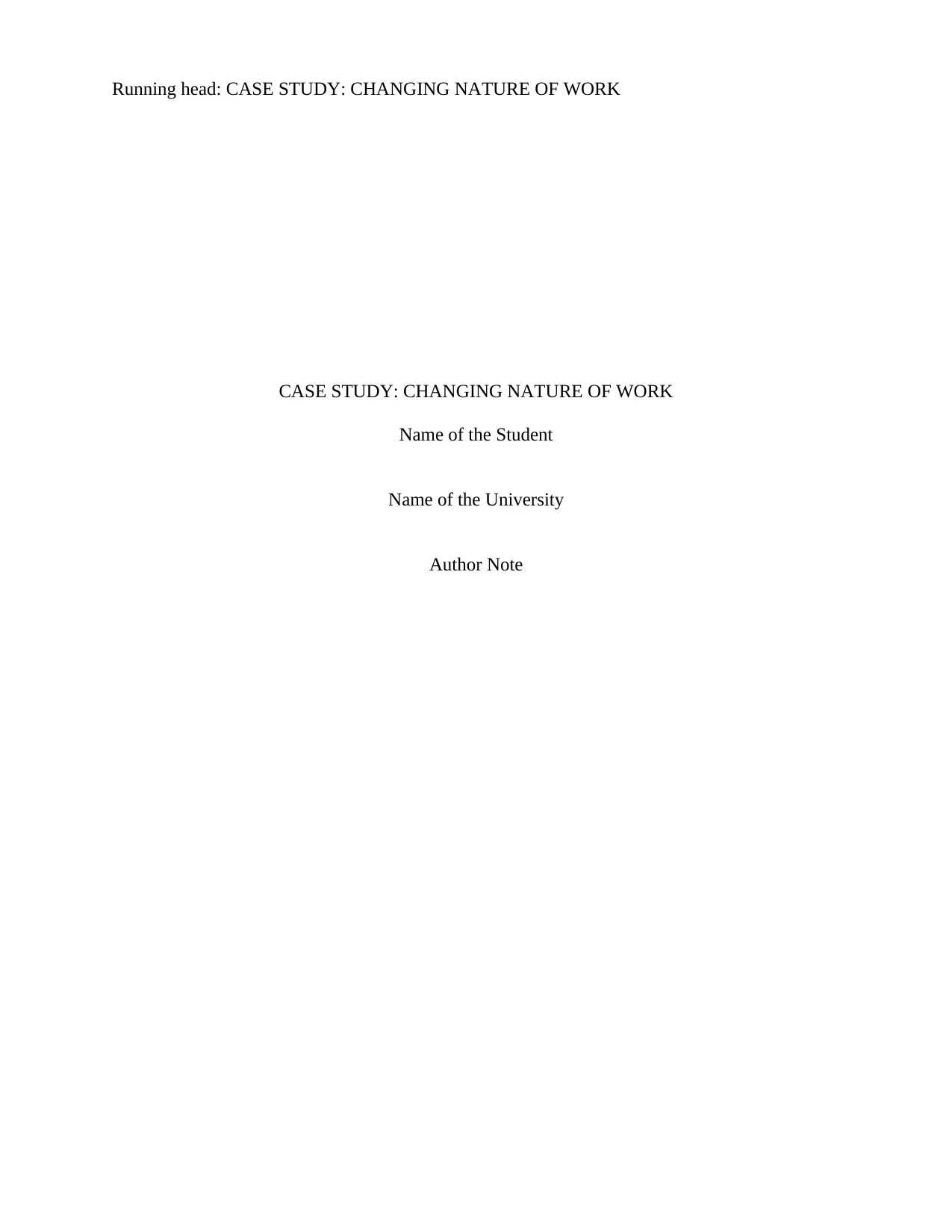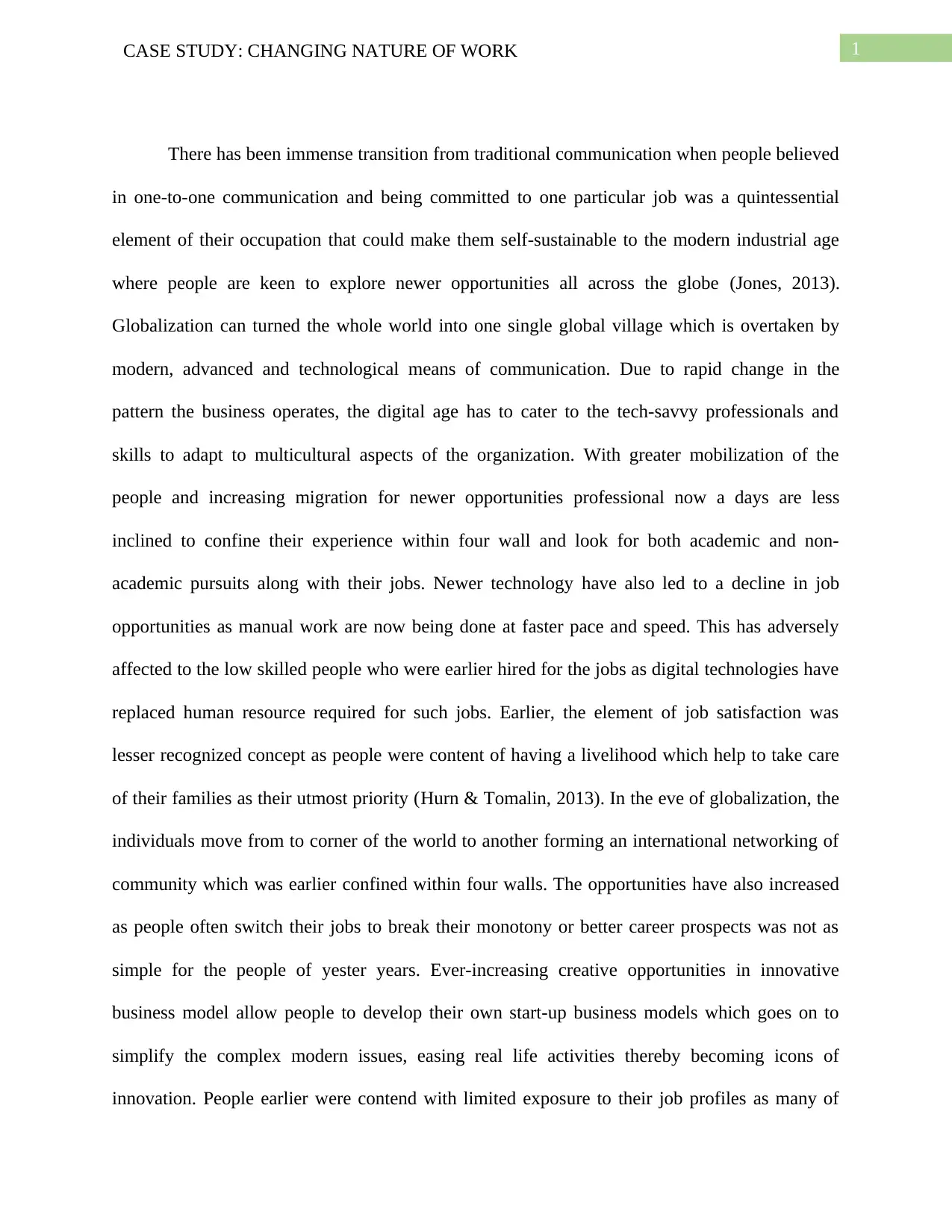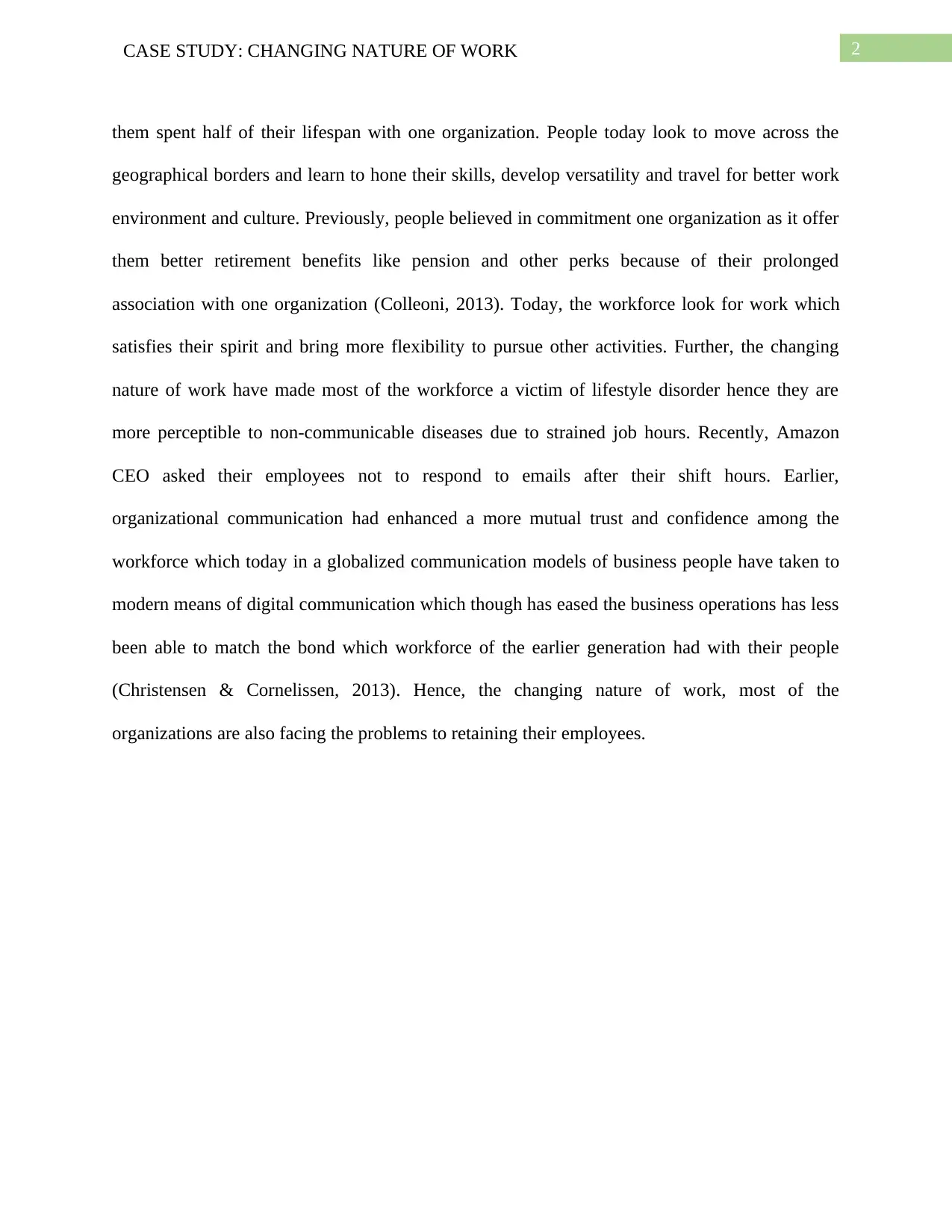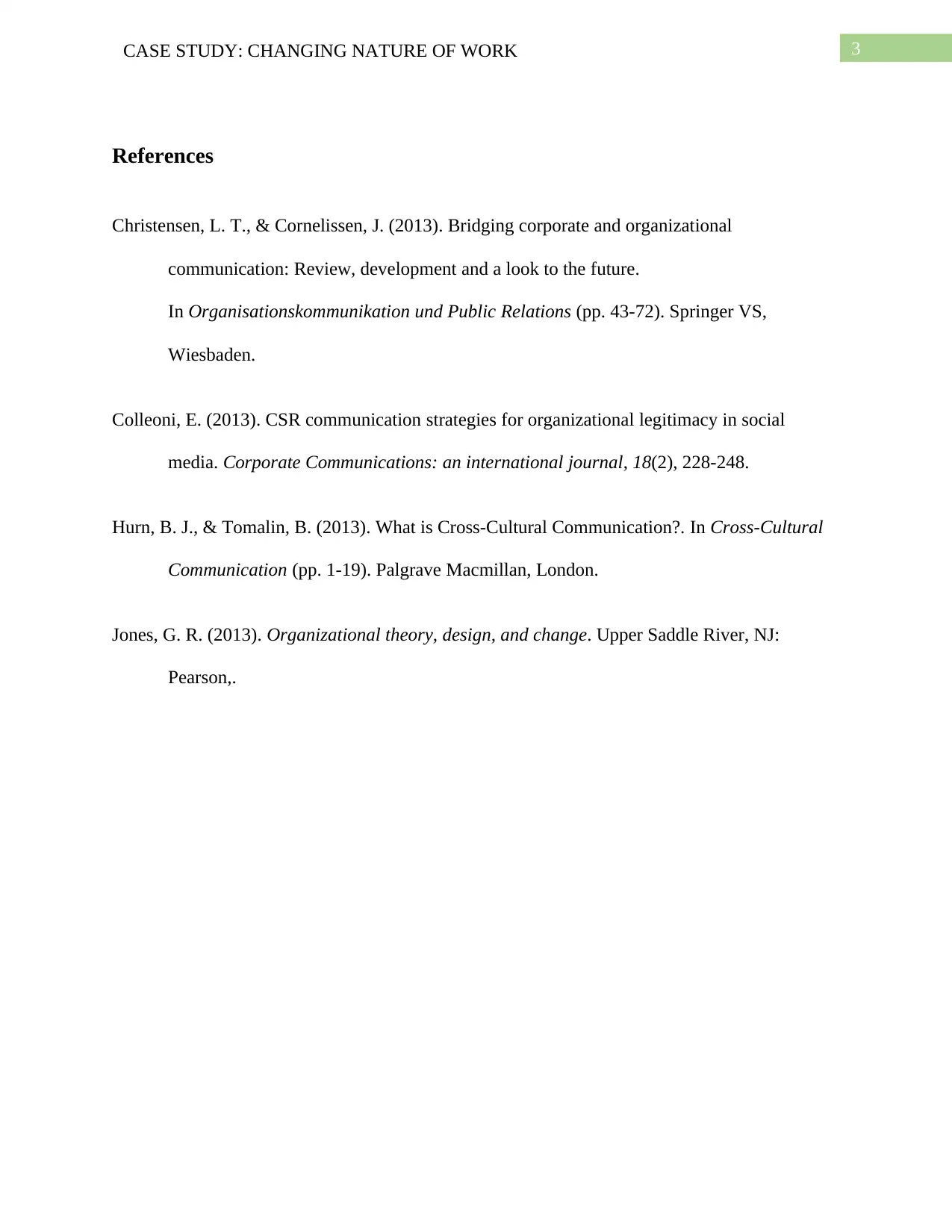The Changing Nature of Work: A Case Study on Globalization's Impact
VerifiedAdded on 2023/05/29
|4
|769
|293
Case Study
AI Summary
This case study examines the significant shift from traditional, localized work environments to the modern, globalized landscape. It highlights how globalization and technological advancements have transformed communication methods, job opportunities, and employee expectations. The study discusses the impact of digital technologies on job roles, the changing emphasis on job satisfaction, and the increased mobility of the workforce. Furthermore, it addresses the challenges organizations face in retaining employees in this dynamic environment, including the rise of lifestyle disorders due to demanding work hours and the erosion of traditional interpersonal bonds within the workplace. The case study concludes by emphasizing the need for organizations to adapt to these evolving dynamics to foster a healthy and productive work environment. Desklib provides access to similar solved assignments and study tools for students.
1 out of 4











![[object Object]](/_next/static/media/star-bottom.7253800d.svg)